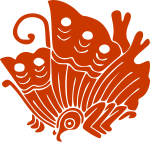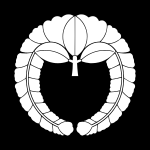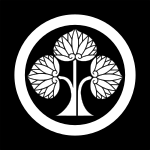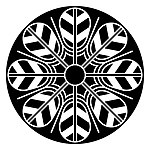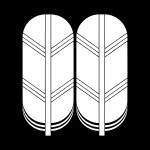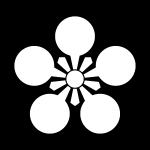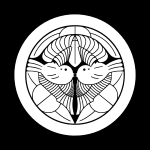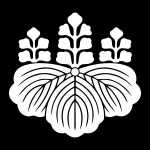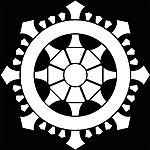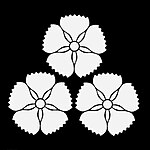J u m p t o c o n t e n t
M a i n m e n u
M a i n m e n u
N a v i g a t i o n
● M a i n p a g e ● C o n t e n t s ● C u r r e n t e v e n t s ● R a n d o m a r t i c l e ● A b o u t W i k i p e d i a ● C o n t a c t u s ● D o n a t e
C o n t r i b u t e
● H e l p ● L e a r n t o e d i t ● C o m m u n i t y p o r t a l ● R e c e n t c h a n g e s ● U p l o a d f i l e
S e a r c h
Search
A p p e a r a n c e
● C r e a t e a c c o u n t ● L o g i n
P e r s o n a l t o o l s
● C r e a t e a c c o u n t ● L o g i n
P a g e s f o r l o g g e d o u t e d i t o r s l e a r n m o r e ● C o n t r i b u t i o n s ● T a l k
( T o p )
1 A n c i e n t c l a n n a m e s
T o g g l e A n c i e n t c l a n n a m e s s u b s e c t i o n
1 . 1 I m p e r i a l C l a n
1 . 2 F o u r n o b l e c l a n s
2 N o b l e c l a n s
3 A r i s t o c r a t i c f a m i l y n a m e s
T o g g l e A r i s t o c r a t i c f a m i l y n a m e s s u b s e c t i o n
3 . 1 Z a i b a t s u
3 . 2 S a c e r d o t a l c l a n s
3 . 3 R y u k y u
4 T o r a i j i n ( 渡 来 人 )
T o g g l e T o r a i j i n ( 渡 来 人 ) s u b s e c t i o n
4 . 1 B a e k j e
4 . 2 G o g u r y e o
4 . 3 S i l l a
4 . 4 G a y a
4 . 5 C h i n a
5 S e e a l s o
6 N o t e s
7 R e f e r e n c e s
T o g g l e t h e t a b l e o f c o n t e n t s
J a p a n e s e c l a n s
1 2 l a n g u a g e s
● E s p a ñ o l ● ف ا ر س ی ● F r a n ç a i s ● L i e t u v i ų ● م ص ر ى ● P o l s k i ● P o r t u g u ê s ● Р у с с к и й ● С р п с к и / s r p s k i ● У к р а ї н с ь к а ● T i ế n g V i ệ t ● 中 文
E d i t l i n k s
● A r t i c l e ● T a l k
E n g l i s h
● R e a d ● E d i t ● V i e w h i s t o r y
T o o l s
T o o l s
A c t i o n s
● R e a d ● E d i t ● V i e w h i s t o r y
G e n e r a l
● W h a t l i n k s h e r e ● R e l a t e d c h a n g e s ● U p l o a d f i l e ● S p e c i a l p a g e s ● P e r m a n e n t l i n k ● P a g e i n f o r m a t i o n ● C i t e t h i s p a g e ● G e t s h o r t e n e d U R L ● D o w n l o a d Q R c o d e ● W i k i d a t a i t e m
P r i n t / e x p o r t
● D o w n l o a d a s P D F ● P r i n t a b l e v e r s i o n
I n o t h e r p r o j e c t s
● W i k i m e d i a C o m m o n s
A p p e a r a n c e
F r o m W i k i p e d i a , t h e f r e e e n c y c l o p e d i a
This is a list of Japanese clans . The old clans (gōzoku Nihon Shoki Kojiki Heian period , during which new aristocracies and families, kuge samurai warrior clans gradually increased in importance and power until they came to dominate the country after the founding of the first shogunate .
Ancient clan names
[ edit ]
There are ancient-era clan names called Uji-na (氏名 or Honsei (本姓 .
Imperial Clan
[ edit ] Mon of The Imperial House
Four noble clans
[ edit ]
Gempeitōkitsu (源平藤橘 , 4 noble clans of Japan:
Mon of the Minamoto clan Mon of the Taira clan Mon of the Fujiwara clan Mon of the Tachibana clan
Noble clans
[ edit ]
Abe clan (阿部氏/安倍氏 ) – descended from Prince Ōhiko, son of Emperor Kōgen ; no direct relation to the Abe clan of Ōshū (安倍氏 ).
Abe clan of Ōshū [ja (安倍氏 ) – descended from Abihiko (disputed); no direct relation to the Kōgen-descent Abe clan (阿部氏 ), famous for Abe no Hirafu and Abe no Yoritoki .
Aya clan of Sanuki province [ja – According to the Kojiki descended from Prince Takekaiko, grandson of Emperor Keikō .
Hashiji clan (土師氏 ) – descended from the kami Nomi no Sukune (legendary).
Imube clan (忌部氏 ) – descended from the kami Ame no Futotama no Mikoto (legendary), and his descendant Ame no Tomi no Mikoto companion in arms of Emperor Jimmu .
Ki clan [ja (紀氏 ) – descended from Emperor Kōgen by the Minister Takenouchi no Sukune ; famous for Ki no Tsurayuki .
Kusakabe clan [ja (日下部氏 ) – descended from 9th Emperor Kaika , or 36th Emperor Kōtoku (disputed).
Mononobe clan (物部氏 ) – descended from the kami Nigihayahi no Mikoto (legendary), a descendant of the elder brother of Ninigi no Mikoto (legendary), great-grandfather of Emperor Jimmu ; famous for Mononobe no Moriya .
Nakatomi clan (中臣氏 ) – descended from the kami Ame no Koyane no Mikoto (legendary), and his descendant Ame no Taneko no Mikoto companion in arms of Emperor Jimmu ; origin of Fujiwara clan .
Ō clan (多氏 ) – descended from Prince Kamuyaimimi no Mikoto, son of Emperor Jimmu ; famous for Ō no Yasumaro .
Ochi clan [ja (越智氏 ) – descended from Mononobe clan .
Ōe clan [ja (大江氏 ) – descended from Hashiji clan.
Ōtomo clan (大伴氏 ) – descended from Michi-omi no Mikoto companion in arms of Emperor Jimmu ; no direct relation to the immigrant Ōtomo clan (大友氏 ) or feudal Ōtomo clan (大友氏 ); famous for Ōtomo no Yakamochi .
Ozutsuki clan [ja (大筒木氏 )
Soga clan (蘇我氏 ) – descended from Emperor Kōgen , by the Minister Takenouchi no Sukune ; famous for Soga no Umako .
Sugawara clan (菅原氏 ) – descended from Hashiji clan; famous for Sugawara no Michizane
Takahashi clan [ja (高橋氏 )
Aristocratic family names
[ edit ]
From the late ancient era onward, the family name (Myōji/苗字or 名字) had been commonly used by samurai to denote their family line instead of the name of the ancient clan that the family line belongs to (uji-na/氏名 or honsei/本姓), which was used only in the official records in the Imperial court. Kuge families also had used their family name (Kamei/家名) for the same purpose. Each of samurai families is called『[family name] clan (氏)』as follows and they must not be confused with ancient clan names. The list below is a list of various aristocratic families whose families served as Shugo , Shugodai , Jitō , and Daimyo
Mon of the Akita clan Mon of the Asano clan Mon of the Hōjō clan Mon of the Honda clan Mon of the (Mino) Ikeda clan Mon of the Itō clan Mon of the Maeda clan Banner with the Mon of the Matsumae clan Mon of the Mori clan (森氏)
Matsunaga clan (松永氏 ) – descended from Fujiwara clan and retainers for the Miyoshi clan . Famous for Matsunaga Danjo Hisahide .Mon of the Matsunaga clan
Matsuura clan (松浦氏 ) – cadet branch of Watanabe clan who descended from Saga Genji.
Miura clan (三浦氏 ) – descended from Kanmu Heishi.
Mikumo clan (三雲氏 ) – cadet branch of Kodama clan who descended from Fujiwara Hokke .
Miyahara clan (宮原氏 ) – descended from Ashikaga Motouji (Seiwa Genji ).
Miyoshi clan (Ogasawara) (三好氏 ) – cadet branch of Takeda clan , by the Ogasawara clan who descended from Seiwa Genji , famous for Miyoshi Nagayoshi ; no direct relation to the Fujiwara-descent Miyoshi clan (三吉氏 ).Mon of the Miyoshi clan
Miyoshi clan (三吉氏 ) – descended from Fujiwara clan ; no direct relation to the Ogasahara-descent Miyoshi clan (三好氏 ).
Mizuryū clan (水龍氏) – descended from Seiwa Genji .
Mogami clan (最上氏 ) – cadet branch by the Shiba clan of the Ashikaga clan who descended from Seiwa Genji .Mon of the Mōri clan
Mori clan (森氏 ) – descended from Seiwa Genji ; famous for Mori Ranmaru .
Mōri clan (毛利氏 ) – descended from Ōe clan; no direct relation to the Genji-descent Mōri clan (毛利氏 ) or Fujiwara-descent Mōri clan (毛利氏 ); famous for Mōri Motonari and his sons.
Mōri clan of Inaba (因幡毛利氏 ) – cadet branch.
Mōri clan (毛利氏 ) – descended from Uda Genji ; no direct relation to Ōe-descent Mōri clan (毛利氏 ) or Fujiwara-descent Mōri clan (毛利氏 );
Mōri clan (毛利氏 ) – descended from Fujiwara clan (disputed); no direct relation to Ōe-descent Mōri clan (毛利氏 ) or Genji-descent Mōri clan (毛利氏 );
Murakami clan (村上氏 ) – descended from Seiwa Genji .
Murakami clan of Inland Sea (村上水軍 ) – also known as Murakami Suigun; famous for their naval forces.
Murakami clan of Innoshima (因島村上氏 )
Murakami clan of Kurushima (来島村上氏 )
Murakami clan of Nōnoshima (能島村上氏 )
Murakami clan of Shinano (信濃村上氏 ) – also known as Shinshū Murakami clan; famous for Murakami Yoshikiyo .
Nagao clan (長尾氏 ) – descended from Kanmu Heishi; famous for Uesugi Kenshin .
Nabeshima clan (鍋島氏 ) – cadet branch of Shōni clan who descended from Fujiwara Hokke .
Nakayama family (中山家 ) - descended from Nakayama Tadachika , third son of Fujiwara no Tadamune of the Fujiwara Hokke . Known for Nakayama Tadayasu and his daughter Nakayama Yoshiko , mother of the Emperor Meiji.
Niiro clan (新納氏 ) – cadet branch of Shimazu clan of the Satsuma Domain who descended from Seiwa Genji .
Nakamura clan (中村氏 )
Nanbu clan (南部氏 ) – cadet branch of Takeda clan who descended from Seiwa Genji .
Nijō family (二条家 ) – descended from Fujiwara Hokke .
Nitta clan (新田氏 ) – descended from Seiwa Genji ; famous for Nitta Yoshisada .
Niwa clan (丹羽氏 ) – cadet branch of Kodama clan who descended from Fujiwara Hokke (disputed); no direct relation to the Isshiki-descent Niwa clan (丹羽氏 ).
Niwa clan (丹羽氏 ) – cadet branch of Isshiki clan who descended from Seiwa Genji ; no direct relation to the Kodama-descent Niwa clan (丹羽氏 ).Mon of the Oda clan
Oda clan (織田氏 ) – descended from Kanmu Heishi; famous for Oda Nobunaga .
Ôishi clan of Ako (大石氏 ) – descended from the Fujiwara clan . The name Oishi comes from 'Oishi no sho' in Omi province. Famous for Ōishi Yoshio .
Ôishi clan of Shinano (大石氏 ) – descended from the Fujiwara clan through the Numata clan. The name Oishi comes from 'Oishi go', in Shinano province.
Ôishi clan of Musashi (大石氏 ) – descended from the Kiso clan (Seiwa Genji ).
Ōkōchi clan (大河内氏 ) – descended from Seiwa Genji .
Ōta clan – descended from Seiwa Genji ; famous for Ōta Dōkan .
Ogasawara clan (小笠原氏 ) – cadet branch of Takeda clan descended from Seiwa Genji .Mon of the Ogasawara clan
Ōtomo clan (大友氏 ) – descended from Fujiwara Hokke ; no direct relation to the ancient Ōtomo clan (大友氏 ) or Ōtomo clan (大伴氏 ); famous for Ōtomo Sōrin .
Ōuchi clan (大内氏 ) – descended from Tatara clan and claim to descend from the royal house of Baekje .
Rokkaku clan (六角氏 ) – cadet branch of Sasaki clan who descended from Uda Genji .
Sagara clan (相良氏 ) – descended from Fujiwara Nanke.
Saitō clan (斉藤氏 ) – descended from Fujiwara Hokke ; famous for Saitō Dōsan .
Sakai clan (酒井氏 ) – cadet branch of Nitta clan , by the Tokugawa clan descended from Seiwa Genji .
Sakuma clan (佐久間氏 ) – cadet branch of Miura clan who descended from Kanmu Heishi.
Sanada clan (真田氏 ) – descended from Seiwa Genji (disputed); famous for Sanada Nobushige who is more commonly known as Sanada Yukimura .
Sanjō family (三条家 ) – descended from Fujiwara Hokke ; famous for Sanjō Sanetomi .
Sasaki clan (佐々木氏 ) – descended from Uda Genji .
Satake clan (佐竹氏 ) – descended from Seiwa Genji .
Satomi clan (里見氏 ) – descended from Seiwa Genji .
Shiba clan (斯波氏 ) – cadet branch of Ashikaga clan who descended from Seiwa Genji .Mon of the Shimazu clan
Shimizu clan of Mino (清水氏 ) – descended from Minamoto no Yorimitsu of the Seiwa Genji .
Shimizu clan of Bicchu (清水氏 ) – descended from the Taira clan .
Shimizu clan of Izu (清水氏 ) – descended from the Fujiwara clan .
Shimizu clan of Dewa (清水氏 ) – cadet branch of the Mogami clan and through the Shiba clan from the Ashikaga clan (Seiwa Genji ).
Shimazu clan (島津氏 ) – also known as Satsuma Clan ; descended from Seiwa Genji .
Shinmen clan (新免氏 ) – also known as Shimmen clan; cadet branch of Akamatsu clan who descended from Murakami Genji .
Shōni clan (少弐氏 ) – descended from Fujiwara Hokke .
Sō clan (宗氏 ) – descended from Koremune clan.
Sogō clan (十河氏 ) – descended from Emperor Keikō .Mon of the Suwa clan
Sōma clan (相馬氏 ) – cadet branch of Chiba clan who descended from Kanmu Heishi.
Sōma clan of Ōshū (奥州相馬氏 ) – head family.
Sōma clan of Shimōsa (下総相馬氏 ) – cadet branch.
Suda clan (ja:須田 ) – famous for being a clan of samurai , and martial art practitioners. While the northeastern and west-central family branches state that they are descended from the Minamoto clan through the Inoue family, the family branch in Okinawa has the legend that they are descendants of the Japanese dragon (Nihon ryū).
Sue clan (陶氏 ) – cadet branch of Ōuchi clan who descended from Tatara clan. famous for Sue Harukata .
Sugi clan (杉氏 ) – cadet branch of Sasaki clan who descended from Uda Genji ; famous for Yoshida Shōin .
Suwa clan (諏訪氏 ) – more or less unknown ancestors, many believed Suwa descended from Seiwa Genji through Minamoto no Tsunetomo.
Tachibana clan (立花氏 ) – cadet branch of Ōtomo clan, descended from Ōtomo Yoshinao ; no direct relation to the ancient Tachibana clan (橘氏 ); famous for Tachibana Ginchiyo and her husband Tachibana Muneshige .
Mon of the Takeda clan Mon of the Toki clan Mon 'Mitsuboshi ni ichimonji' of the Watanabe clan
Zaibatsu
[ edit ]
Zaibatsu were the industrial and financial vertically integrated business conglomerates in the Empire of Japan , whose influence and size allowed control over significant parts of the Japanese economy from the Meiji period until the end of World War II .
Sacerdotal clans
[ edit ]
Ryukyu
[ edit ]
Ryukyuan people are not Yamato people , but the Ryukyu Islands have been part of Japan since 1879.
Mon of the Ryukyu Kingdom
Ryukyuan dynasties:
[ edit ]
Toraijin is used to describe migrants in many contexts, from the original migration of a Yamato peoples to more recent migrants. According to the book Shinsen Shōjiroku Kinai area on Honshū were regarded as people with foreign genealogy. The book specifically mentions mentions 163 were from China, such families from Baekje , 41 from Goguryeo , 9 from Silla , and 9 from Gaya . These families are considered notable, although not inherently noble.[4] [5]
Baekje
[ edit ]
Goguryeo
[ edit ]
Silla
[ edit ]
Hata clan (秦氏 ) – claims to be descended from Yuzuki no Kimi . The clan claimed descent from Qin Shi Huang , but recent Japanese research points this to be aggrandization and their true origin to be from Silla.
Chōshi clan (調子氏 ) – cadet branch of Hata clan.
Chōsokabe clan (長宗我部氏 ) – descended from Hata clan (disputed); famous for Chōsokabe Motochika .Mon of Chōsokabe clan
Fujiki clan (藤木氏 ) – cadet branch of Hata clan.
Hakura clan (羽倉氏 ) – cadet branch of Hata clan.
Hirata clan (平田氏 ) – cadet branch of Hata clan.
Kada clan (荷田氏 ) – cadet branch of Hata clan.
Kawakatsu clan (川勝氏 ) – cadet branch of Hata clan, named after Hata no Kawakatsu . Mon of Kawakatsu clan
Matsumuro clan (松室氏 ) – cadet branch of Hata clan.
Matsuo clan (松尾氏 ) – cadet branch of Hata clan.
Matsushita clan (松下氏 ) – cadet branch of Hata clan.
Mikami clan (三上氏 ) – cadet branch of Hata clan.
Minami clan (南氏 ) – cadet branch of Hata clan.
Mokusei clan (木星) – cadet branch of the Hata Clan.
Nishiōji clan (西大路氏 ) – cadet branch of Hata clan.
Obata clan (小畑氏 ) – cadet branch of Hata clan.
Ōkura clan (大蔵氏 ) – cadet branch of Hata clan.
Ōnishi clan (大西氏 ) – cadet branch of Hata clan.
Seo clan (瀬尾氏 ) – cadet branch of Hata clan.
Tōgi clan (東儀氏 ) – cadet branch of Hata clan.
Tsuchiyama clan (土山氏 ) – cadet branch of Hata clan.
Fushimaru clan (伏丸氏 )
Hine clan (日根氏 )
Itoi clan (糸井氏 ) – descended from Amenohiboko , a prince of Silla who came to Japan in the 3rd or 4th century.
Maki clan (真城氏 )
Tachibanamori clan (橘守氏 ) – descended from Amenohiboko , a prince of Silla who came to Japan in the 3rd or 4th century.
Tajima clan (但馬氏 ) – descended from Amenohiboko , a prince of Silla who came to Japan in the 3rd or 4th century.
Unabara clan (海原氏 )
Gaya
[ edit ]
Arara clan (荒荒氏 )
Hirata clan (辟田氏 ) – descended from Tsunugaarashito (都怒我阿羅斯等), a prince of Gaya .
Karabito clan (韓人氏 )
Michita clan (道田氏 )
Ōchi clan (大市氏 ) – descended from Tsunugaarashito (都怒我阿羅斯等), a prince of Gaya .
Tatara clan (多多良氏 ) – descended from Tsunugaarashito (都怒我阿羅斯等), a prince of Gaya .
Toyotsu clan (豊津氏 )
China
[ edit ]
See also
[ edit ]
Notes
[ edit ]
^ Grapard, Allan G. (1992). The protocol of the gods , p. 42.
^ Saeki, Arikiyo (1981). Shinsen Shōjiroku no Kenkyū (Honbun hen)ISBN 4-642-02109-4
^ "渡来人と赤穂" . The KANSAI Guide - The Origin of Japan, KANSAI (in Japanese). Retrieved 2022-09-14 .
References
[ edit ]
R e t r i e v e d f r o m " https://en.wikipedia.org/w/index.php?title=Japanese_clans&oldid=1226802785 " C a t e g o r y : ● J a p a n e s e c l a n s H i d d e n c a t e g o r i e s : ● C S 1 J a p a n e s e - l a n g u a g e s o u r c e s ( ja ) ● A r t i c l e s w i t h s h o r t d e s c r i p t i o n ● S h o r t d e s c r i p t i o n i s d i f f e r e n t f r o m W i k i d a t a ● A r t i c l e s n e e d i n g a d d i t i o n a l r e f e r e n c e s f r o m A p r i l 2 0 1 8 ● A l l a r t i c l e s n e e d i n g a d d i t i o n a l r e f e r e n c e s ● A r t i c l e s c o n t a i n i n g J a p a n e s e - l a n g u a g e t e x t ● C o m m o n s c a t e g o r y l i n k i s o n W i k i d a t a ● A r t i c l e s w i t h N D L i d e n t i f i e r s
● T h i s p a g e w a s l a s t e d i t e d o n 1 J u n e 2 0 2 4 , a t 2 2 : 4 1 ( U T C ) . ● T e x t i s a v a i l a b l e u n d e r t h e C r e a t i v e C o m m o n s A t t r i b u t i o n - S h a r e A l i k e L i c e n s e 4 . 0 ;
a d d i t i o n a l t e r m s m a y a p p l y . B y u s i n g t h i s s i t e , y o u a g r e e t o t h e T e r m s o f U s e a n d P r i v a c y P o l i c y . W i k i p e d i a ® i s a r e g i s t e r e d t r a d e m a r k o f t h e W i k i m e d i a F o u n d a t i o n , I n c . , a n o n - p r o f i t o r g a n i z a t i o n . ● P r i v a c y p o l i c y ● A b o u t W i k i p e d i a ● D i s c l a i m e r s ● C o n t a c t W i k i p e d i a ● C o d e o f C o n d u c t ● D e v e l o p e r s ● S t a t i s t i c s ● C o o k i e s t a t e m e n t ● M o b i l e v i e w




